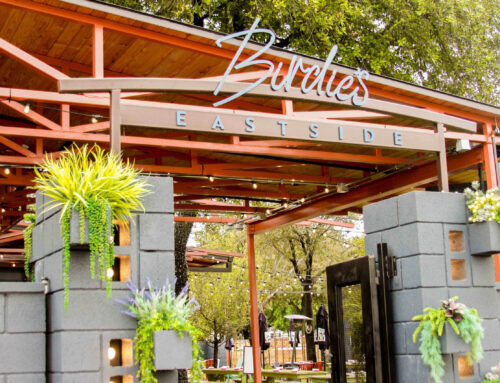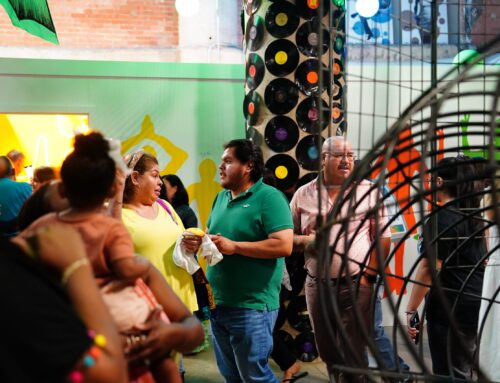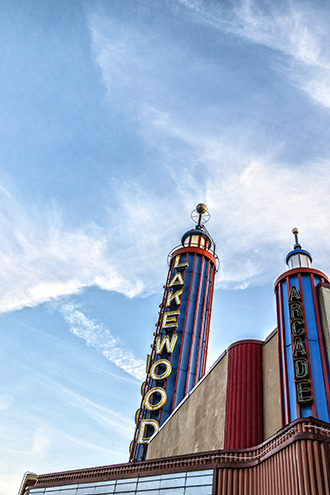 “There were no horns growing out of their heads or anything. These guys will not be dressing up as Darth Vader for Halloween.”
“There were no horns growing out of their heads or anything. These guys will not be dressing up as Darth Vader for Halloween.”
That was preservation architect Norman Alston‘s takeaway from his first meeting with Lakewood Theater owners Craig Kinney and Bill Willingham, right before they hired the longtime Hollywood-Santa Monica resident to help them navigate the process of making the theater an official city landmark. Kinney stated at a recent Landmark Commission meeting that they intended to hire an architect from a list Preservation Dallas provided, and Alston was a bit surprised when he received the call.
“I’m kind of actively working on the other side of the issue,” he says, noting his involvement with the Save the Lakewood Theater group, which has vocally criticized the owners. But he was thrilled to be chosen and to team with the owners in preserving the theater.
“I told them that as long as everybody understands I want the same thing I’ve always wanted, I’m happy to guide the process,” Alston says. “If they’re looking for a harbor pilot, someone who knows the dangers and opportunities, then I’m that guy.
After talking with Willingham and Kinney, Alston says he realized that “what we have perceived as difficulty in the past is really just not being familiar with the process. What they pounded into me is that they don’t have any intention of screwing up the theater, so I’ve been brought in to make sure we’re all pulling on the same rope.”

East Dallas preservation architect Norman Alston
Alston says he was recommended by fellow Hollywood-Santa Monica resident Santos Martinez, who works for the zoning firm Masterplan and was hired by the owners shortly before the Landmark Commission meeting.
“Personally, I think Norm’s a great fit,” Martinez says. “He’s served on the Landmark Commission and this is his forte.” Alston’s expertise covers not only architecture and preservation but also the kinds of state and federal tax credits available to historic structures, which is “pretty major,” Martinez says.
Alston noted some of these possibilities in our January cover story on what it would take to save the Lakewood Theater. He is working now to expedite the designation process, which is the informal agreement made by landmark commissioners and the owners. The timeline “could impact their negotiations with potential tenants, so they want this done quickly,” he says. He already has completed the first step — detailing what theater elements are protected, what can and cannot be done — and submitted it for the designation committee to review at this Wednesday’s meeting.
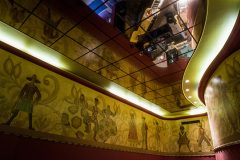
The mural art in the Lakewood Theater lobby was painted by Woodrow Wilson High School graduate Perry Nichols in the ’30s.
Though city landmark status usually applies only to building exteriors, there is a provision in the ordinance protecting interiors that are customarily open and accessible to the public. This would apply to the lobby murals created by Woodrow Wilson High School graduate Perry Nichols, Alston says.
“The murals will be saved, and we will outline provisions as to how to take care of them,” he says. “It will be possible to cover them in a way that does not damage them so they are there in the future for someone who chose to come in and reveal them, but that’s the fallback position.”
Alston says he hasn’t visited the theater in some time — “Burlesque shows and gay bingo aren’t really my thing,” he says, referring to the theater’s bookings in recent years — and has been told some of the period art in the theater is “questionable.” Nevertheless, “whatever it is, it will be there,” he says.
If all goes well, Alston says, designation should be complete by October, and then it will go to the Landmark Commission, City Plan Commission and City Council for final approval.
“It’s going to be as quick as this process could reasonably be expected to go,” he says.
Simultaneously, the Landmark Commission launched a task force of neighbors to partner with the owners on code issues, such as parking, which aren’t directly related to structure preservation but do impact the building’s use. The owners have worked to find a theater group but so far have not been able to negotiate an agreement with potential tenants such as Alamo Drafthouse or the group behind Oak Cliff’s Texas Theatre. They have reiterated the likelihood of carving up the theater into several restaurant and retail spaces.
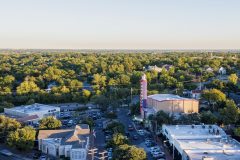
Photo by Danny Fulgencio
Martinez says he has been tasked with verifying the theater’s parking credits “so moving forward, they can rest assured from a city perspective they still have the parking they need.” The shopping center was constructed in the ’30s, and parking requirements were grandfathered from decades past. Kinney has noted the theater has enough parking for restaurants according to city codes, but not enough from a practical perspective.
In essence, it’s hard to tell a potential tenant, “You’ve got 20 parking credits,” Martinez says, when the response is likely, “Yeah, but where do people park?”
“I think it’s great that we’re having this conversation now while everyone’s already talking” about landmark designation, Martinez says.
At this point, it seems that the city, the owners and the neighbors are all, indeed, “pulling on the same rope” when it comes to the Lakewood Theater, and prospects for its preservation are strong. As Alston also stated in our January cover story:


